“It was under the pressure of the evil influence, two days before
his death, of Dr. Gachet, a so-called psychiatrist, which was the
direct, effective, and sufficient cause of his death.
When I read van Gogh’s letters to his brother, I was left with
the firm and sincere conviction that Dr. Gachet, “psychiatrist,”
actually detested van Gogh, painter, and that he detested him as
a painter, but above all as a genius.”
Van Gogh, the Man Suicided by Society
by Antonin Artaud (1947)
It was a very strange end , to a very strange life for Vincent Van Gogh. As is well known, he shot himself. But, was his own physician partly to blame for his death? Had Van Gogh lived, what would he have done? His early suicide made the myth as much as completed his art. At times it seems to compete with it.
Van Gogh, the artist absolutely sags under the weight of scholarship, popular biography and biopics, cartoons and spoofs. There have been pop songs and cakes decorated to look like his starry, starry night. Kirk Douglas wrestled manfully to depict him as troubled, over-sensitive artist, the disturbed and self-destructive hero. Retrieving the real Van Gogh – whoever he might be – from his place in the popular imagination becomes a more difficult task the more he is buried beneath the characterisations.
The story of his life is worth retelling. Van Gogh was a late starter, mostly self-taught, uneven, smitten with mental illness, dead at 37. His trajectory as an artist – from sodden Dutch landscapes under heavy skies, toiling peasants and weavers, to the flaring, sometimes hallucinogenic landscapes of Provence, all of which ended after he shot himself one afternoon in a southern French cornfield in 1890, an unfinished letter still in his pocket – is a luminous and shocking arc.
“No, van Gogh was not mad, but his paintings were bursts of Greek
fire, atomic bombs, whose angle of vision would have been capable
of seriously upsetting the spectral conformity of the
bourgeoisie.In comparison with the lucidity of van Gogh, psychiatry is no
better than a den of apes who are themselves obsessed and
persecuted and who possess nothing to mitigate the most appalling
states of anguish and human suffocation but a ridiculous
terminology. To a man, this whole gang of respected scoundrels
and patented quacks are all erotomaniacs.” ( Artaud )
Theo Van Gogh, on the recommendation of Pissarro, had arranged for Vincent to be treated by Dr. Gachet, an older doctor who was close to the expressionist painters and an advocate of homeopathy. Vincent, in a letter to his brother felt Gachet was an unbalanced eccentric on first meeting him. In the intervals between fits, Vincent was completely lucid, and in his letters to Theo he showed a remarkable understanding of the personalities of others as well as his own. He was not in the habit of questioning the mental stability of the people he met, for he knew how precarious the balance of the mind could be. Still, after a single meeting with Dr. Gachet, Vincent was convinced that he, too, was mentally ill, or at least dangerously unstable.
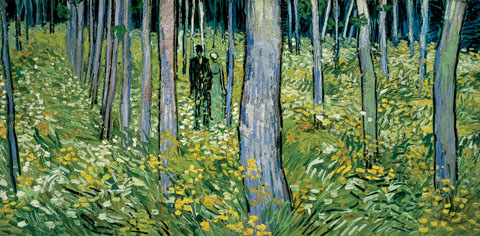
"In his 1890 painting titled Undergrowth with Two Figures, Vincent van Gogh revived one of his favorite motifs: two lovers strolling through a natural setting. Rather than a romantic image, Vincent always regarded a couple as an emblem of companionship; he believed lovers completed each other. But the setting of van Gogh's Undergrowth with Two Figures -- with no clear path in view -- undermines any aspect of consolation. The figures seem trapped amidst the staggered tree trunks."
What was there about Gachet to justify Vincent’s judgement? Certainly, he was no ordinary doctor. Born in Lille in 1828, he was an early convert to Homeopathy. He was outspoken in his criticisms of conventional medicine. His thesis was written on melancholy, the word for clinical depression at the time, and on installing himself in Paris, he befriended Cezanne, Manet, Pissarro, and Renoir. Whether he was a capable physician is a question of conjecture….
In 1883, when Manet”s leg became infected and his doctors recommended amputation, Dr. Gachet went to see him and said he could cure him without an operation. But before Gachet had a chance to demonstrate his curative powers, Manet’s leg was amputated and he died ten days later. He did, however, treat Pissarro with homeopathic remedies, and Renoir had once asked him to treat a little girl, a model, who was suffering from tuberculosis. Dr. Gachet saw the child, but on February 25, 1889, Renoir wrote him, ” Dear doctor, the little girl you were kind enough to look after, unfortunately too late, has died. I am nonetheless grateful for the relief you brought her, although we were both convinced it was in vain.”
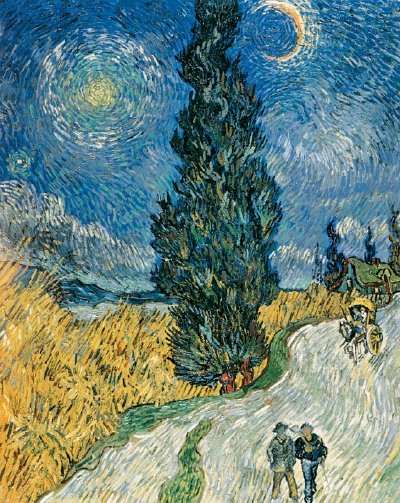
"Road with Cypress and Star was completed by Vincent van Gogh in 1890, shortly after arriving in Auvers-sur-Oise. In mid-May, Vincent boarded a train alone to make his journey north from Saint-Rémy to Paris. Van Gogh spent four days with his brother's family and then took the short train trip to Auvers-sur-Oise. The small village was surrounded by wheat fields, and Vincent readily found his subject for Road with Cypress and Star in familiar motifs such as the twisting cypress trees and the stunning illumination of the broad country sky."
Homeopathic remedies were no more successful in saving Dr. Gachet’s own wife, who died of tuberculosis in 1875, leaving him with a son and daughter. After her death, he fell into periodic fits of despondence.
Dr. Gachet seemed drawn to anything that was bizarre or extravagant. He was a free thinker, a non-conformist, a lover of the new and the original. He founded the Society for Mutual Autopsy, whose members agreed to have their bodies cut open after their deaths and their vital organs examined. He tried in vain to recruit Renoir, telling him how important it would be for science to have a great artist’s brain to inspect. He was involved in phrenology and palmistry. He invented antirheumatic and anti-constipation powders, and used electric shock treatment to cure urinary ailments. He thought of himself as an innovator and a specialist in nervous diseases. Perhaps part of his attraction to the impressionist movement was that it was damned by the establishment of his day.
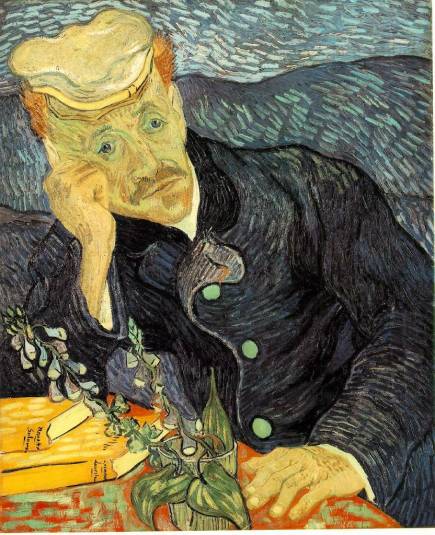
"Van Gogh’s second painting of Gachet. It’s been missing since the 90′s when it was purchased by a Japanese industrialist. Shortly after that, he went broke and died. Nobody knows where the painting is. He may have sold it off when he went broke, but there were also rumors that he was buried with it (which would be pretty selfish of him). Shrouding the painting in more mystery, is the theory that it’s actually a copy made by one of the Gachets from the blue one (both Dr. Gachet and his son were notorious copiers of art in their possession). But before we jump to forgery conclusions (which I’d love to do), I should mention that Van Gogh mentioned painting this one as well as the blue one in letters to Theo. Also, copying art was a learning technique of the day and practiced by other painters and teachers."
“So society has strangled in its asylums all those it wanted to
get rid of or protect itself from, because they refused to become
its accomplices in certain great nastiness.In the face of this concerted nastiness, it is not delirium to
walk around at night in a hat with twelve candles on it to paint
a landscape from nature.Van Gogh did not committ suicide in a fit of madness, in dread of
not succeeding, on the contrary, he had just succeeded, and
discovered what he was and who he was, when the collective
consciousness of society, to punish him for escaping from its
clutches, suicided him.It was not because of himself, because of the disease of his own
madness, that van Gogh abandoned his life.” ( Artaud )
Gachet, was, in any case, the man to whom Theo had confided his sick brother. In his second letter to Theo and Joanne, around the end of May, Vincent wrote, ” Today, I saw Dr. Gachet again….He seems very sensible, but he is as discouraged about his job as a doctor as I am about my painting. Then I told him that I would gladly swap jobs with him. He said to me besides, that if the melancholy or anything else became too much for me to bear, he could easily do something to lessen the intensity, and that I must not feel awkward about being frank with him.”
Dr. Gachet’s treatment, although based mainly on infusions of optimism, seemed to be doing Vincent some genuine good. The doctor was opposed to confinement and sensed that Vincent could best improve by living a normal life among other people and working as well as he could, which was very well indeed. Van Gogh had started painting at the age of twenty-eight and would die at the age of thirty-seven; thus his entire career as a painter lasted only nine years, during which time he produced nine hundred paintings and a hundred drawings and watercolors.
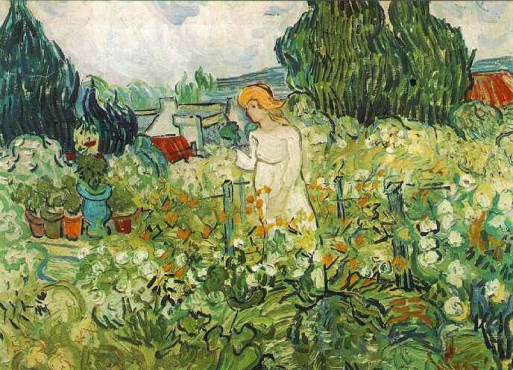
"The novel “The Last Van Gogh” is based on the premise that Van Gogh and Marguerite were having an ill fated, secret affair. There’s no evidence of this, but it’s a good story. Marguerite was rather mysterious, never married and rarely left her father’s house in Auvers until she died in 1949. Van Gogh did have a habit of falling for the first available female in the room, even if they happened to be his own relative (he was heartbroken by a cousin who rejected his marriage proposal when he was a young man). The author, Alyson Richman Berkley, says she was inspired by Van Gogh’s portrait of her at the piano"
The seventy days he spent in Auvers, near Gachet, the last seventy days of his life, were his most productive. He completed seventy paintings, an average of one a day, and thirty drawings. He would begin a new canvas before the previous one was dry, rising at dawn and trudging out to the Oise valley with his easel under his arm, returning punctually for meals with the other boarders, and retiring at nine to his whitewashed garret room on the third floor with its one dormer window.
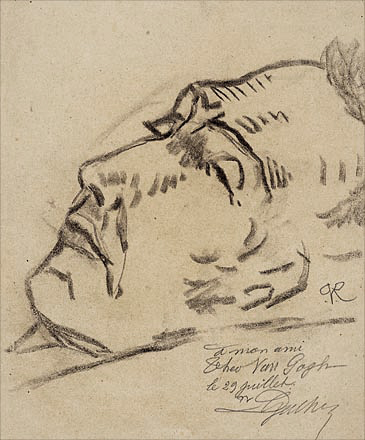
"Dr. Gachet was more than a mediocre doctor. He fancied himself an artist and engraver. He practiced his art under the nom de plume (or is that nom de peintre?), Paul van Ryssel. His most famous work is a sketch of Van Gogh on his death bed.. In my book, it makes him more like paparazzi than a doctor. Michael Jackson’s final doctor (Dr. Conrad Murray) comes to mind."
On Sunday, May 25, Dr. Gachet invited Vincent to lunch in the garden, after which the doctor handed him a dry point and a polished copper plate and sat as a model for the only Van Gogh etching in existence, “Portrait of Dr. Paul Gachet”. Two days later, Vincent painted Gachet’s garden. In the beginning of June he wrote his younger sister Wilhelmina in Holland: ” I have found a true friend in Dr. Gachet, something like another brother, so much do we resemble each other physically and also mentally. He is a very nervous man himself and very queer in his behavior…. ” In stead of being put off by the doctor’s strange ways, Vincent considered them part of their bond.
On June 4 vincent wrote Theo , who had been faithfully sending him fifty- franc notes, canvas, sketching paper, and tubes of paint, that he was working on the doctor’s portrait. “He certainly seems to me as ill or distraught as you or me”, Vincent wrote, “and he is older and lost his wife several years ago, but he is very much the doctor, and his profession and faith still sustain him. We are great friends already… I am working on his portrait…”. Dr. Gachet, admired the portrait so much that he asked Vincent to make a second version, which was quite different from the first. It had, Vincent wrote Gaugin, with whom he was reconciled after the falling out at Arles, “the heartbroken expression of our time”
The true adventurer goes forth aimless and uncalculating to meet and greet unknown fate. ~ O. Henry


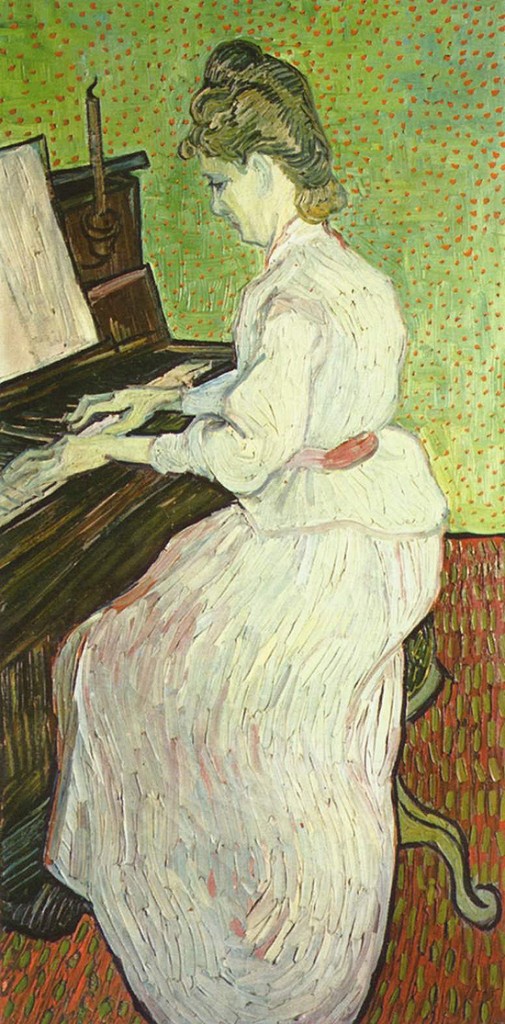
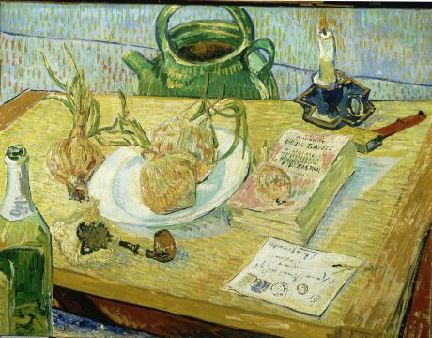
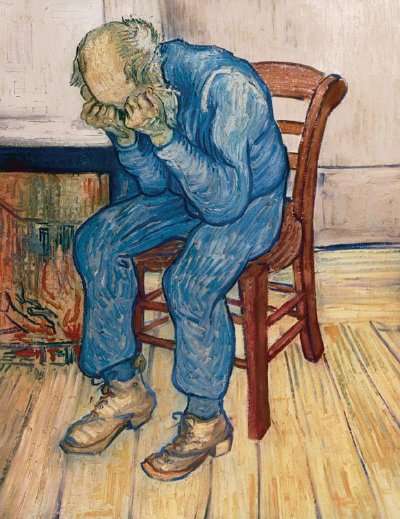
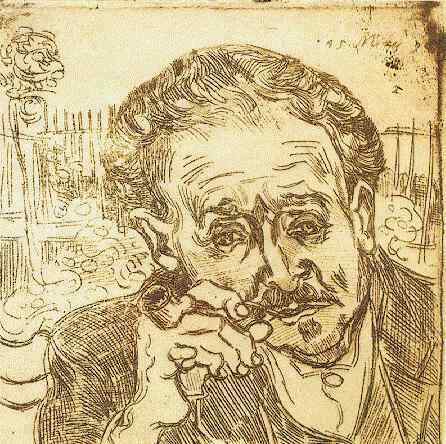



 COMMENTS
COMMENTS